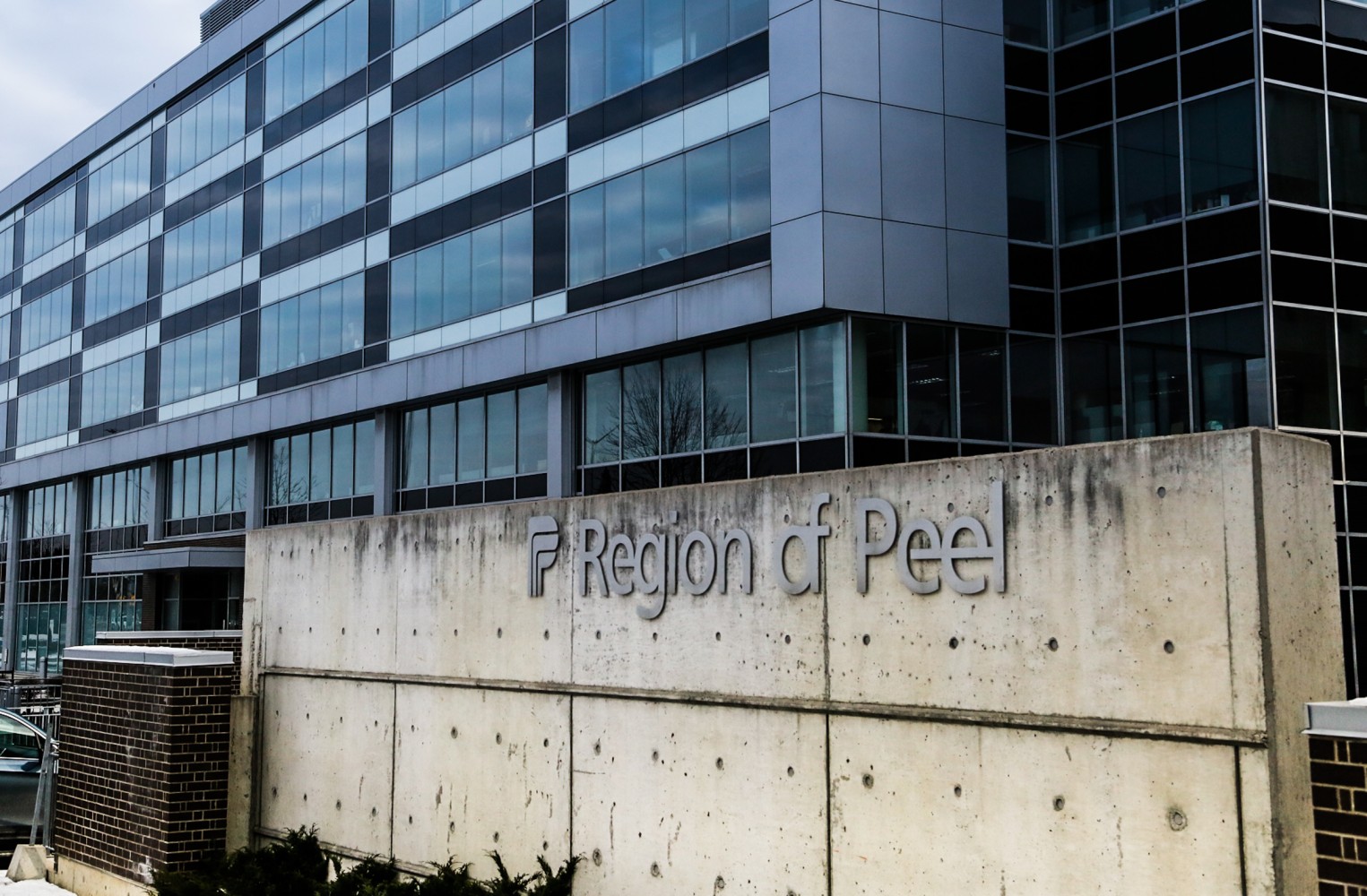
Peel seeks minor tax increase, another big utility hike in 2021 & more money to care for seniors
In shaping Peel’s 20-year outlook, the Region’s Strategic Plan tagline sets the tone, and establishes the pillars, for its vision: “Living-Thriving-Leading”.
That was five years ago.
Today, the word “surviving” would be more apt.
Councillors in the pandemic hotspot are about to debate the 2021 budget in a region with Ontario’s highest cumulative per capita infection rate for the novel coronavirus.
In Mississauga and Brampton, each City Council says it is poised to weather the financial challenges of collapsed revenue during the pandemic. The Region is opting for “temporary resources” to support the community through the crisis, according to budget documents released on January 14.
The recommendations translate to a tax increase for Peel’s portion of the 2021 property bill, which is blended with each municipality’s share and the Province’s education levy. Staff are proposing a 1.3 percent increase in property taxes, compared to the 3.6 percent hike seen in the 2020 budget. This represents an extra $11.30 per $100,000 of assessed value for a residential property.
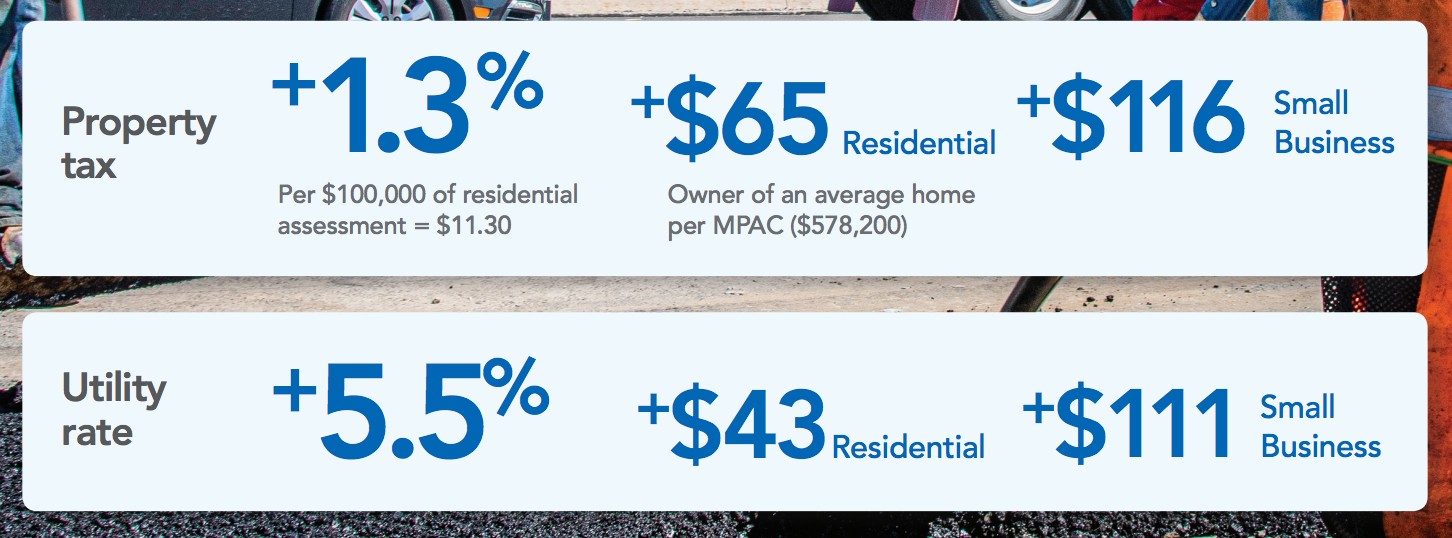
Increasing the utility rate by a proposed 5.5 percent – lower than the 2020 hike of 7.2 percent, but about three times the rate of inflation in Ontario – will mean the average household can expect to pay about $43 more this year, and about $111 more for small businesses.
It follows a worrisome trend of dramatic utility-rate increases in Peel over the last decade. Including 2010, the utility rate in Peel has risen annually by the following percentages: 5, 9.1, 6, 7, 7, 7, 9, 5, 6.5, 6.5, 7.2.
The Region’s utility rate was a topic of discussion during debate over the 2020 budget. “We need to get a better handle on smoothing those utilities rate increases going forward...we just have not been really consistent,” Mississauga and Regional Councillor Pat Saito said. Referring to the past 15 years of regional budgets, she added that “there were years where we reduced the rate, there were years where it was zero and then a year later we skyrocket it to 7 or 8 percent.”
Her Mississauga colleagues Karen Ras and Chris Fonseca echoed Saito’s sentiment, asking for a fixed or variable utility increase to be put in place for future years. In response to the request, Region of Peel’s former commissioner of public works, Andrew Farr (who now works for Halton Region) said a team was working to review the utility rate and was looking to adopt a more structured, long-term strategy in time for the 2022 budget.
The new interim commissioner, Andrea Warren, who moved over from Peel Housing, will now lead any efforts to better manage the utility-rate supported budget.
With $2.7 billion in projected operating costs and $1 billion in capital expenditures, the overall proposed Peel Region budget addresses the challenges of a hyper-growth area. As the Region adapts to its rapidly growing population (about 20,000 newcomers per year) it also has to manage services for its aging residents.
Budget deliberations are scheduled to begin on January 28 and will run until mid-February.
Funding for affordable housing in Peel has become a race against the clock. The Region’s COVID-19 emergency funding for homelessness supports ends in March. With the average length of shelter stays on the rise, staff are recommending a $2.7 million request in the operating budget as part of its Emergency Shelter Operation, which would see the addition of 60 new shelter beds.
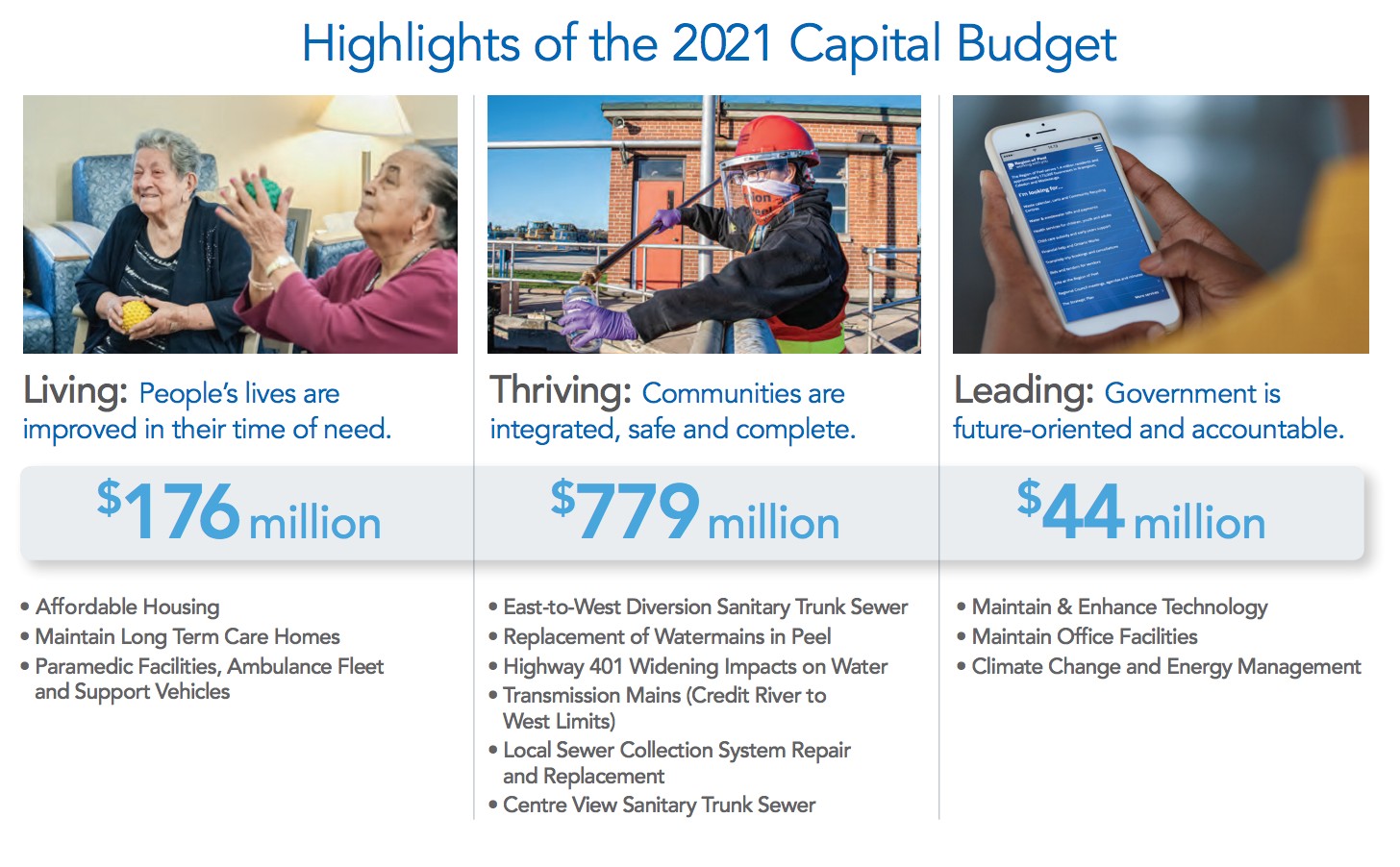
Staff are also asking for $120 million in the capital budget to fund the Housing Master Plan, which was previously criticized for being “significantly and disproportionately” backed by the Region compared to what was described as inadequate contributions from the provincial and federal governments.
The Housing Master Plan also includes $10.8 million in loans for state-of-good-repair projects and $1.8 million for technology licenses.
The lack of certainty around provincial funding for certain programs, including adult day services, has pushed the Region to allot program funding for seniors at a time when programs that tend to their well-being are underfunded, the budget states.
These services include physiotherapy, nursing care, reading and gardening groups, medication supports, transportation and a range of other functions critical to the well-being of seniors, and many are carried out in long-term care settings.
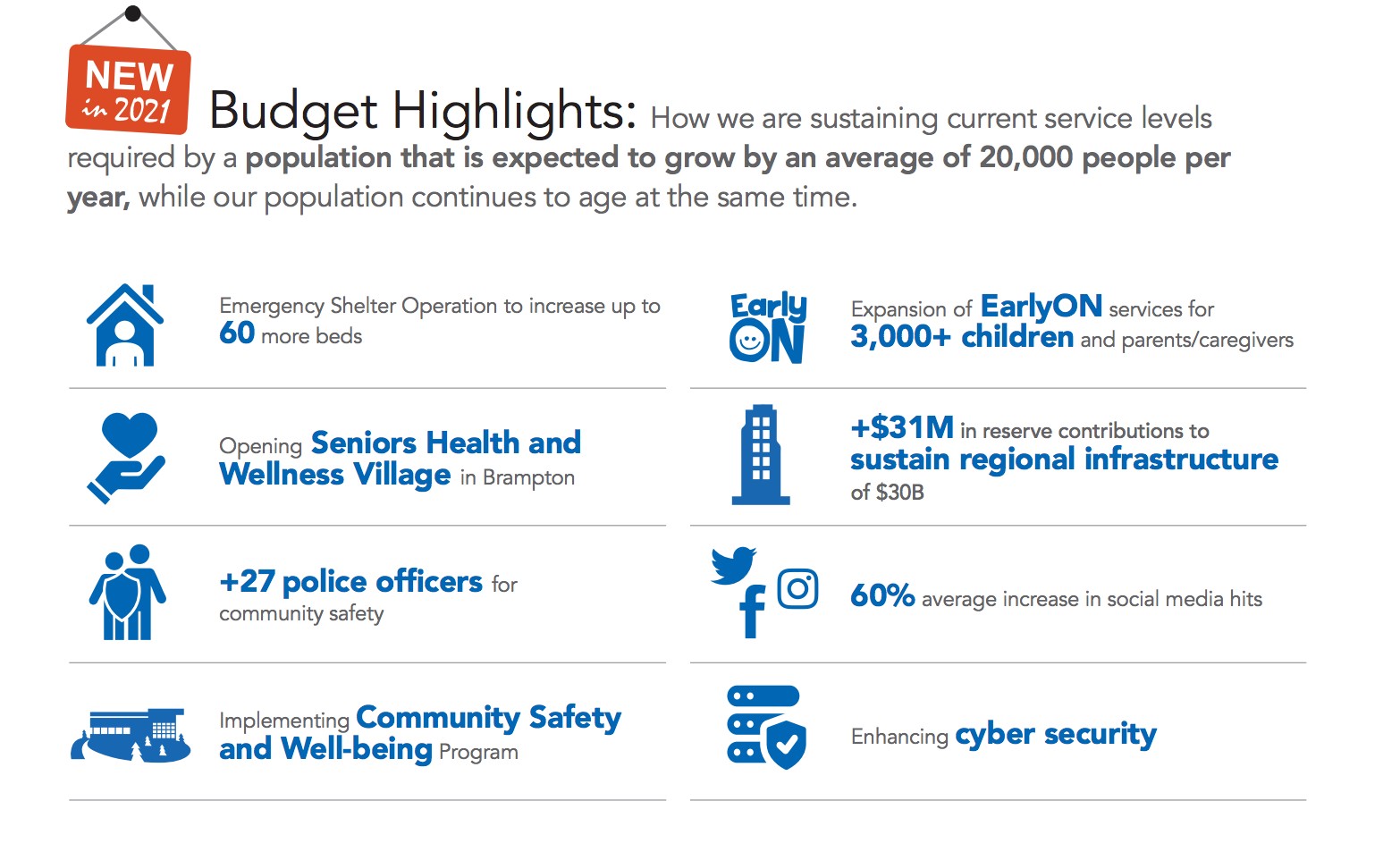
The tragedy that has unfolded across Ontario’s senior-living sector during the pandemic has highlighted the chronic lack of funding and attention to support the elderly.
Regional Staff recorded more than 7,000 contacts with seniors virtually since the beginning of the pandemic. At the same time, the wait list for these services has grown by 22 percent.
The Region operates five publicly funded long-term care facilities in Peel: Tall Pines and Peel Manor in Brampton; Malton Village and Sheridan Villa in Mississauga; and Davis Centre in Caledon.
This year’s proposed budget for the Region’s long-term care needs is $41.7 million, up about $1.5 million from 2020, when the provincial government increased its funding by $700,000. Capital projects for 2021 are being allotted about $5 million, for repairs including driveway repaving, upgrading elevators and fire prevention.
A popular paramedicine program, introduced as a pilot project at several Peel Living seniors’ buildings, was made permanent last year and will be provincially-funded to the tune of $132,000. The program was designed to reduce calls to paramedics and push the border of care outside the emergency room and into the community, when possible, through preventative approaches.
Other strikethroughs in the budget indicating provincial funding cuts have forced staff to reallocate money to support vital programs, including supplementing $1.8 million in the Region’s operating budget to replace provincial employment support funding for agency grants. The Region is also continuing to invest in its 2018 strategy to combat human-trafficking, funding $600,000 for its second of a three-year program to assist victims.
The Region’s paramedic service is slated to receive about $19.5 million in capital funding toward a new reporting station, as well as $4.6 million for state-of-good-repair projects and $2.3 million to replace 15 ambulances. The proposed operating budget will absorb another $1.3 million to support an increase in 911 call volumes and $300,000 to create mental health programming for frontline workers, many of whom deal with a range of challenges.
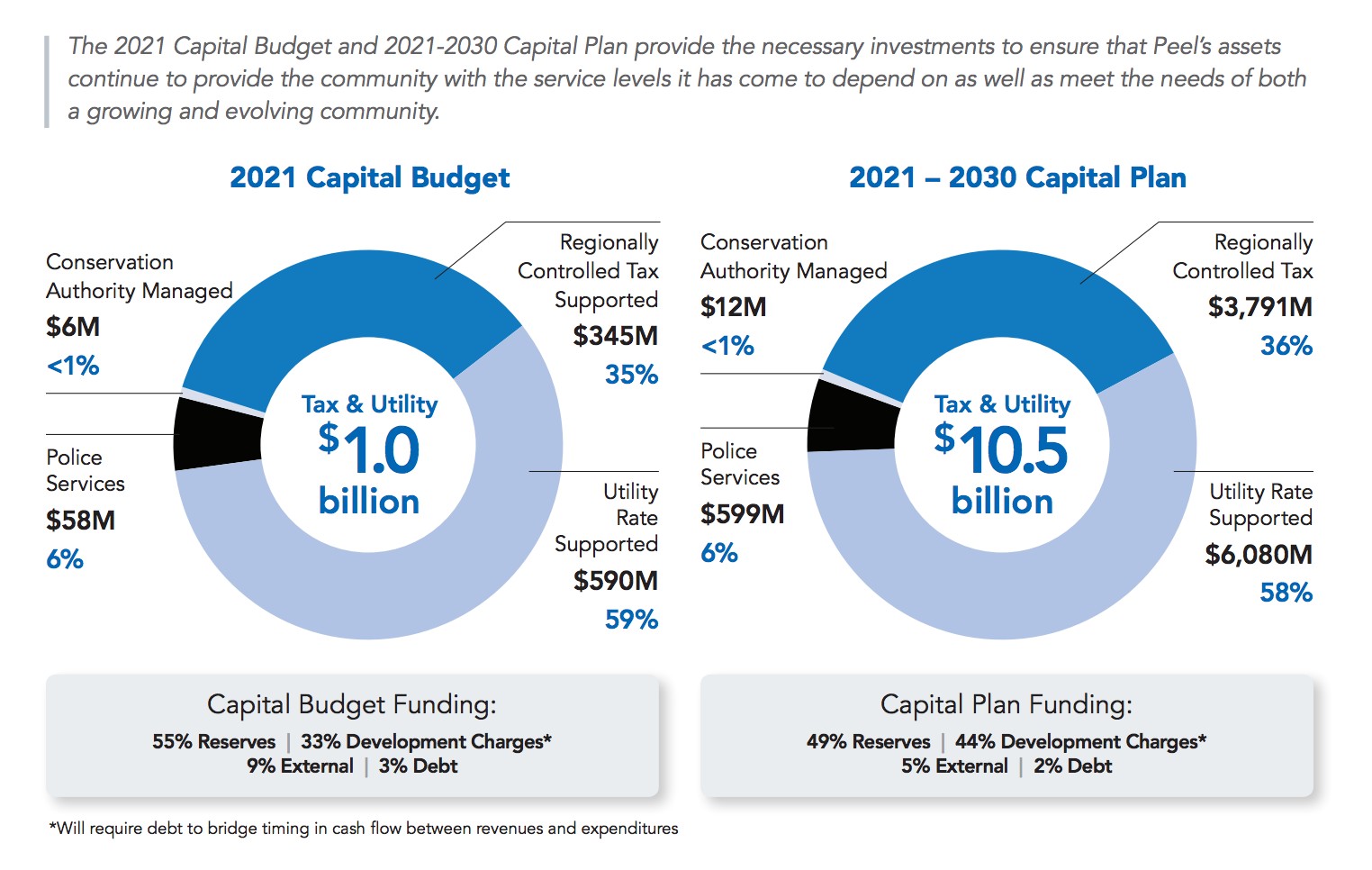
A breakdown of Peel's capital spending for 2021 and its plans for the future.
Public health funding from the Province, to the tune of $3.3 million, will support 64 school-focused nurses until July 2021. With school closures and mandatory online learning still in place, it’s unclear whether the funding will be put on hold or reallocated in the community.
The three Conservation Authorities whose watershed jurisdiction includes Peel (Credit Valley, Halton and Toronto and Region) which are at risk of having their work curtailed by the Ford government, are asking for a combined $45.3 million from the Region of Peel in 2021, including about $4.9 million for capital projects designated for flood forecasting, infrastructure upgrades, invasive species programs such as the containment of the Emerald Ash Borer infestation (which has devastated Peel’s tree canopy over the past decade) and at the conservation agencies themselves. The largest share of the total would go to Credit Valley, $25.2 million; $19.5 million would go to TRCA; and Halton would get just $496,000, as it only has a small piece of its watershed in Peel.
The total represents a 2.6 percent increase compared to what Peel Region gave the agencies last year.
Calls for Peel’s “fair share” in funding from higher levels of government reflect the needs in a chronically under-resourced region that is outpacing growth in any other part of the province. Brampton Mayor Patrick Brown has highlighted the need for more money to support healthcare in the city, and Mississauga Mayor Bonnie Crombie is promising to fight for vaccine allocations commensurate with the city’s higher per capita rate of infection.
Read More: Police budget balances fight against increasingly complex crime and calls for new funding model
Email: [email protected]
Twitter: @LaVjosa
COVID-19 is impacting all Canadians. At a time when vital public information is needed by everyone, The Pointer has taken down our paywall on all stories relating to the pandemic and those of public interest to ensure every resident of Brampton and Mississauga has access to the facts. For those who are able, we encourage you to consider a subscription. This will help us report on important public interest issues the community needs to know about now more than ever. You can register for a 30-day free trial HERE. Thereafter, The Pointer will charge $10 a month and you can cancel any time right on the website. Thank you.
Submit a correction about this story


